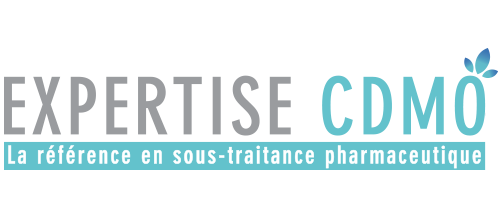The basic components of the Sales and Operations Planning (SOP) in the pharmaceutical industry are the commercial plan, the production plan (often called the industrial plan so as not to confuse it with the production program), coherence of these two plans, decisions and arbitrations, validation by the company of the resulting plans

Familiarize yourself with steps of Sales and Operations Planning
The major phases leaders
- Sales and marketing management (sales forecasts and commercial action plans),
- Industrial management and the purchasing department,
- Supply Chain Manager (who is often also the owner or facilitator of the process),
- The President, to manage arbitrations, coherence with strategic plans, validation,
- The responsible for the Sales and Operations Planning process in the pharmaceutical industry.
However, the other functions of the company such as finance, studies / R & D / product development and HR will be involved in the process.
Let’s have a look now to the roles and responsibilities of the stakeholders in rolling out the monthly process of the Sales and Operations Planning in the pharmaceutical industry.
Update of the commercial plan
The sales and marketing department analyzes the sales over the past month: differences between actual orders and forecasts, indicators changes. It collects forecasts: market forecasts, customer forecasts, forecasts from sales managers. It lists the significant sales and marketing actions (promotions, etc.) and organizes these data: updates the sales forecasts and the sales action plan.
Update of the industrial plan
The industrial and purchasing department and the logistics or supply chain department analyze industrial plan over the past month: differences between actual and planned production, indicators changes. They collect manufacturing data: nomenclatures, load profiles, capacity evolutions (industrial projects such as new equipment, taking into account the actual capacities demonstrated by the tools, shutdown and maintenance plans, staff changes and leave …) internally as well as externally (suppliers).
These two directions take into account the updating of sales plan and simulate the updating of the industrial plan allowing to respect it (cf. following paragraph “From the commercial family to the production family”). They calculate global capacity by applying load profiles of production families, and update strategic or critical supply and sub-contracting requirements. They highlight variations in different management areas (firm / flexible / free), prepare adaptation scenarios and note the associated issues with these changes, the impacts of different scenarios and important changes.
From the commercial family to the production family
In many companies, production families are different from commercial families: the com-A family is made up of percentages of items 1, 2, 5, 12 and the prod-I family includes different percentages of items 1, 3, 6.
In this case, the transformation of sales forecasts into production needs is often managed by family correspondence tables. But this system is not easy to manage with the available tools, and in practice, we often prefer to go through the article: sales forecasts in commercial families :
- articles forecasts
- need family production
Concerning the ERP, we note the unsuitability of systems to the Sales and Operations Planning approach that requires a multidimensional approach.
The Sales and Operations Planning in the pharmaceutical industry in relation to other planning levels
The Sales and Operations Planning in the pharmaceutical industry is the planning level above the PMP (production master program). He plans further and with less detail.
Preparation meetings
The process facilitator, the commercial and marketing, industrial and purchasing departments meet as much as necessary in various meetings and consult the other actors. They review the data relevance especially those concerning variations and hard points. They consider scenarios of resources adaptation (means of production, outsourcing, schedules, hiring etc.) and demand adaptation scenarios (promotions, commercial action plan). They examine the impacts of different scenarios (financial, suppliers, etc.). Finally, they validate the hypothesis with the various functions of the company (financial management, studies / R & D / product development, HR).
Useful documents are circulated at the end of these meetings to allow arbitration and validation in industrial and commercial meetings in the commercial industry. They can describe several scenarios with the associated risks and their feasibility.
SOP meeting
If enough prepared, it is a decision meeting (for example between two scenarios). It allows issuing within 24 hours of a IPC understood by all, validated and manageable. This facilitates the updating of other schedules (PMP, supply, etc.) and the realization, as requested, of actions to adapt capacities and commercial actions. The participants are:
- the main actors of the ICP: The President, heads of Commercial, Industrial, Purchasing, Logistics, and the ICP Manager,
- other departments: studies / R & D (partially), financial, (HR?),
- the person in charge of the PMP.
Typical agenda of the IPC meeting (duration 2h)
- Review of the action list of the previous IPC: achievement and relevance;
- General information by the President (economic info, long-term perspectives);
- Performance analysis: review of customer service indicators, ICP performance indicators (expected / realized production) and critical constraints;
- Review of market, economy, competition and company evolution assumptions (strengths and weaknesses);
- Family by family analysis: performance of the last month, commercial and industrial plans, possible proposals, President decision (often we will not list invariants to be limited to singular points: variations and alternatives requiring a decision);
- Update on new products;
- Update on projects that may impact production (works, new software packages, etc.);
- Summary of decisions.
After the executive meeting of the Sales and Operations Planning in the pharmaceutical industry
- Immediate circulation of the report (it is a list of decisions which can be validated by the President at the end of the meeting);
- Diffusion within 24 hours of the validated SOP plan;
- Taken into account in the PMP.


